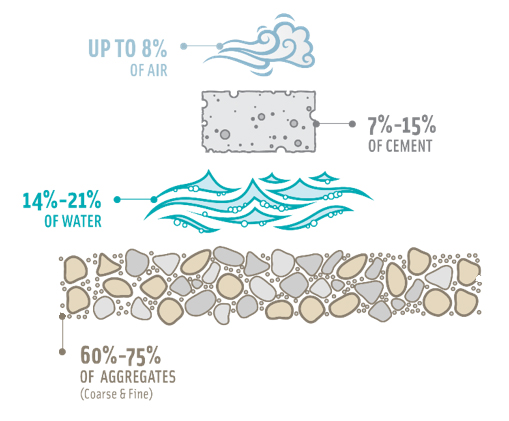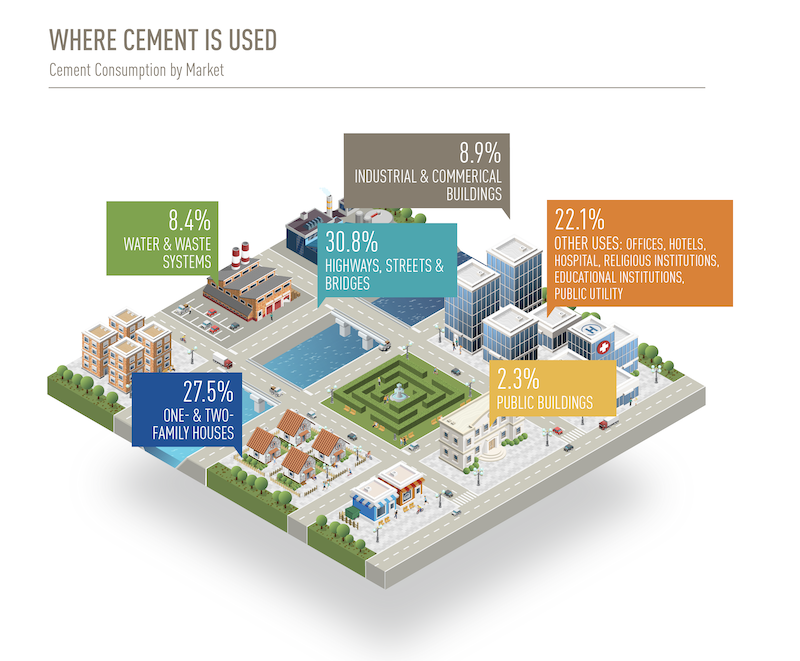Although the words are used interchangeably, cement and concrete are two different types of materials. Like flour is to bread, cement is to concrete.

Concrete is a mixture of two components: aggregate and paste. The paste is made up of portland cement and water, which then binds with sand, gravel or crushed stone (aggregate).
Cement is the basic ingredient of concrete, manufactured through a closely controlled chemical combination in cement plants around the country. The result is a superfine powder, so fine that one pound of cement contains 150 billion grains.
Concrete on the other hand is a mixture of paste and crushed rocks, known as aggregates. The paste, composed of cement and water, coats the surface of the aggregates. Through a chemical reaction called hydration, the paste hardens and gains strength to form the rock-like mass known as concrete.
Within this process lies the key to a remarkable trait of concrete: it’s plastic and malleable when newly mixed, strong and durable when hardened. These qualities explain concrete’s unlimited versatility which can be used to build sidewalks, houses, highways, bridges, dams and skyscrapers.
